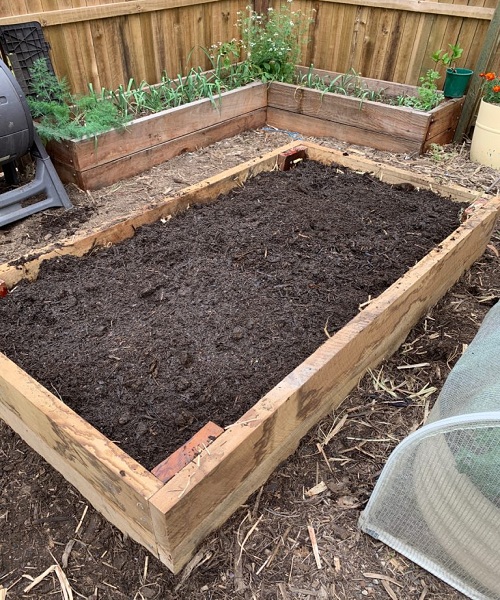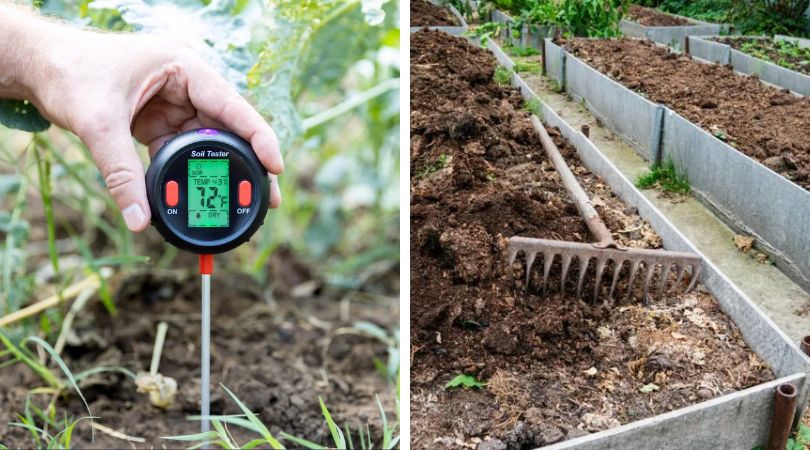When the gardening season is over, many of us breathe a sigh of relief. When the weather cools down and the plants slow down, it might be a welcome relief after months of juggling large daily harvests of zucchini and tomatoes.
You should not, however, assume that you can ignore your garden as winter approaches and return to it in the spring.
Here are a few suggestions for finishing up the garden properly at the end of the season.
Harvest Everything Salvageable
Any plant that requires high temperatures to thrive will have a difficult time as the weather begins to cool. Now is the time to harvest the remainder of the season’s tomatoes and peppers, gather any remaining herbs before they go to seed, and bring in any potatoes that haven’t yet been used.
If you place green tomatoes on a sunny windowsill, they will ripen rapidly. Alternately, you can mature them slowly over time in covered boxes with sufficient airflow and enjoy them all the way through the winter.

Start Saving Seeds
Preserving your go-to vegetable and flower seeds now will help you save money in the garden next year.
It’s simple to conserve the seeds from annual plants; just collect them as the plant begins to die off, put them in paper envelopes (be sure to label them), and store them in a cool, dry area.
Keep them away from any rats or mice that could be lurking.
Keep in mind that it is pointless to try to save seeds from hybrid plants because the resulting plants will not exhibit the characteristics of their parents.

Cut down any standing plants
After you’ve taken all you can from your garden, it’s time to pull out what’s left. Toss any wholesome remnants (assuming they haven’t gone to seed) into your compost bin after cutting them down to soil level or pulling them up by the roots.
You should leave the roots of beans and peas in the ground over the winter, since these nitrogen fixers will add a great deal of nitrogen to the soil as they decompose. Cutting the stems off at an angle helps them decompose more quickly.
Any plant showing signs of disease should be discarded far from your garden soil to prevent the spread of the disease to next year’s harvest.
If you want to prevent the spread of bacteria, fungi, and other disease concerns, this is the best thing you can do to shut down the garden at the end of the growing season.
Squash and zucchini plants should be removed from your garden because they provide a comfortable overwintering environment for squash bugs.

Dig up ant Annuals and/or Perennial Bulbs
Bringing some of your most treasured plants inside for the winter is a good idea right now. Herbs that only live for one year, such as basil and chives, can be grown in pots and placed near a sunny window, while bulbs that live for several years, such as dahlias and canna lilies, are best dug up and replanted each spring.
Many perennials, such as daylilies and bee balm, can be pruned in the fall, but it’s best to wait until the plant has begun to die back naturally before pruning, lest you mistakenly encourage new growth.

Till the Soil (Or Not)
Before the winter sets in, many gardeners like to stir up the soil one last time. In addition to making it easier for birds to locate insects, this practice also helps speed up the decomposition of any leftover plant matter.
Some people believe that if you don’t till your soil very often, it will eventually get healthier. In this instance, you may choose to let go your hens in the garden.
These birds will do a fantastic job of aerating the soil and eating pests, turning a possible issue next spring into a bounty of fresh eggs.

Perform a Soil Test
The results of a soil test taken in the fall can help guide your amendment strategy for the following spring. Order a soil test and get recommendations on appropriate soil amendments and cover crops from your county extension office by calling them.

Add Garden Amendments
It’s possible that you’ll want to start amending your soil right away after receiving the results of your soil test. To prepare for the first frost of the season, lime, for instance, is frequently applied.
Spreading old manure or compost on your vegetable plots in the late fall is another great idea. The repeated freezing and thawing cycles of winter will hasten its decomposition, releasing nutrients that will benefit your young spring seedlings.

Mulch your garden or sow some cover crops
If you leave your garden beds unattended over the winter, the soil should be protected from the weather by being covered with a layer of mulch. Wood chips, grass clippings, straw, cut up leaves, and so forth are all acceptable examples of this.
This material will decompose and add organic matter to your soil, and it will also help your soil hold onto water and resist erosion. The faster the particle size can be reduced, the better.
In addition, you can plant an autumn cover crop at least four weeks before your first frost date.
This crop can continue to absorb sunshine and draw nutrients out from the soil even in the dead of winter. Before the plants go to seed in the spring, you can bury the plant matter by tilling it in. Within a matter of weeks, it will begin to decompose, enriching your soil with natural fertilizer.
Again, your county extension office is a great place to start when trying to figure out which cover crops will work best for your plot. If you have them do a soil test, they may also advise you on how to account for the soil’s nutritional requirements.

Clean Your Gardening Equipment
Get your stirrup hoe and beloved trowel ready for next spring by giving them a thorough cleaning at the end of the season. Use a wire brush to remove all traces of soil, as this might promote rust.
In addition, this is a great time to sterilize any equipment that may have come into touch with infected plants. You could end up unwittingly infecting next year’s crop if you skip this step. Tomato cages must be cleaned before use.

Winterize Your Water System
A burst irrigation system due to a harsh cold is the last thing you need to deal with in spring. As much of the permanent irrigation equipment as feasible should be brought inside and drained for the winter.
Grow Some Garlic
If allowed to grow through the winter, this allium produces exceptional results. Midwinter is the finest time to sow bulbs for a yield in late summer.

Increase the Size of Your Garden
The heat of summer and the rush to get plants into the ground mean that fall is the best time to increase your garden’s size.
It’s the perfect time to try out hugelkultur, construct a few extra raised beds, or organize the framework for a Mandala Garden.

Reflect on the Year’s Successes and Failures
After a long season of gardening, you may be ready to put gardening out of your mind for good. However, before you give up for the year, it’s important to reflect on what went well and what could have been improved.
Don’t assume you’ll remember everything by the time spring planting season rolls around again; jot down the important points now.
Keeping a garden notebook is a great way to record your thoughts and observations as the season unfolds.

